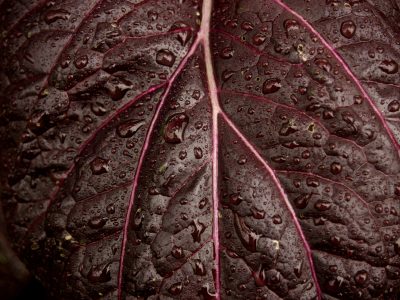Mustard Green Varieties and Cultivation

Purple varieties: you can buy the 4” pot and actually start trimming leaves on it right away. You can grow it in a container and also mix it into flower beds for a really pretty look against your winter annuals, like pansies.
Curly leaf mustard greens: These are the ones you find most often in the grocery store. They can be slightly bitter. You can combine it with turnip greens or collard greens to help soften the flavor a bit, but I find that I like it.
Mibuna and Mizuna, Oriental mustard greens: mild flavor. They’re great for stir-frys or even in salads when the leaves are small. Mizuna can be cooked as a green, too, since its leaves are larger, on a plant that gets large.
Tendergreen: It’s a combination of spinach and mustard, so it has the sweetness of spinach, but the little zip of mustard too. Grows very well here and has amazing flavor.
Lacey mustards: Then the lacy looking mustards are really beautiful to put into your flowerbeds.? You can buy the green one or the red mustard and it becomes beautiful plants.
To harvest:
You can harvest the entire plant and cook the greens. Or, what I generally do is just take off some of the leaves down to the base of the plant. That way I continue harvesting over a long period to time.
You must continue to harvest regularly with mustard because like all of the brassicas, if it’s not being harvested sufficiently, it’s going to go into its bloom stage. You can actually eat its flowers. Cut them down if you want to plant to continue producing leaves.
But if you let it go to seed, you can make your own mustard condiment or just use it in your cooking, for a wonderful flavor. It’s best to harvest the seed pods before they start to open, because they will fly everywhere. Put the brown seed pods in a paper bag to dry indoors.
Insect problems:
Aphids, snails, slugs and pillbugs can sometimes be an issue. Use a strong blast of water or seaweed and soap to deal with aphids. For snails, slugs, and pillbugs, you can use Sluggo Plus. It’s an organic product containing spinosad and iron phosphate.
Cold protection:
It’s fairly cold tolerant too, but for the nights below 25 degrees, I cover it.
categories:
tags:
related:








 Trisha Shirey
Trisha Shirey